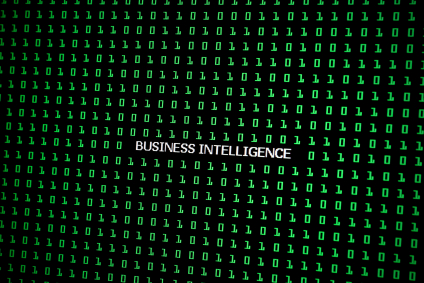Overview  In our previous blog, “Discover the Wealth in Business Intelligence through Data Mining,” we discussed how data mining is indispensible in helping today's executive discover hidden patterns of vital Business Intelligence (BI). With BI, LTC executives have been able to view their organizations’ financial, operational, and marketing Key Performance Indicators (KPIs) in real time. BI viewed through digital dashboards delivers the granularity, flexibility, and responsiveness executives need. Given the layers of information, or analytics, that is available through BI, managers can readily peer into their organization’s performance. Jim Hoey, President of Prime Care Technologies, recently reported, “Many of the executives I visit with understand the value that such a system can offer and have even taken advantage of its availability.”
In our previous blog, “Discover the Wealth in Business Intelligence through Data Mining,” we discussed how data mining is indispensible in helping today's executive discover hidden patterns of vital Business Intelligence (BI). With BI, LTC executives have been able to view their organizations’ financial, operational, and marketing Key Performance Indicators (KPIs) in real time. BI viewed through digital dashboards delivers the granularity, flexibility, and responsiveness executives need. Given the layers of information, or analytics, that is available through BI, managers can readily peer into their organization’s performance. Jim Hoey, President of Prime Care Technologies, recently reported, “Many of the executives I visit with understand the value that such a system can offer and have even taken advantage of its availability.”
Like an onion, however, the more you peel back the informational layers, the more it may bring you to tears. Whether they are tears of joy or frustration depends on what you do with the information.
How does a BI Dashboard work?
Let’s share with you what a dashboard looks like and has done for others. You arrive at your office and log on to your computer. You then click on the dashboard icon on your desktop. After logging in using your desktop, laptop, tablet PC, a thin client, or even an iPad, the digital dashboard displays KPIs which are important to you from a corporate, division, region, or facility standpoint, depending on your security permissions. For LTC providers, these may include vital labor information (especially nursing services), census information, collections, cash summary and details, accounts receivable, RUGs, reports concerning facility risk, a MDS & QM/QI risk focus, corporate/chain survey risks, risk management/loss control, and customized risk analysis, among other KPIs.
The dashboard even cues you automatically regarding which factors should be of greatest concern and where your specific weak spots are at that moment. You have the capability of viewing the cumulative opportunities and risks for your company in the format you prefer – charts, graphs, or tables. You also have the ability to drill down to a corporate and facility level – even to a department or specific employee. You can get as granular as your data and policies allow. And because the information is in real time[1], it reflects what is happening now, based on how often you want the data refreshed. The system will even send real-time alerts when certain KPI’s exceed or drop below specified tolerances.
What’s the impact?
The following are real-world examples of those who have experienced tears of joy: one CEO reported his 22-facility company, a PCT customer, has benefitted from the labor report portion of the dashboard. Because the information is timely and available anytime from anywhere, his team was able to view and respond quickly to labor trends that were unsustainable and wasteful. “Because of our dashboard, we have saved over $80,000 per month in unnecessary labor costs,” he reported. “There is a direct correlation between the dashboard and the savings realized.” In another case, a CEO stated that the MDS feature added an average of $6,500 for the first month to the bottom line of each of his 50-plus facilities with a sustained average improvement of $1,500 per month for each facility thereafter.
The critical key to leveraging BI is whether the information presented in the dashboard is timely, readily interpretable, and actionable. But even if the BI meets those criteria, it still comes down to the most important factor, even for technology – people. People interpret the information, communicate, delegate, make decisions, plan, take action, and follow up. That’s the where real power of business intelligence resides.
In summary:
- Business Intelligence (BI)/analytics delivers the granularity, flexibility, and responsiveness executives need.
- The BI dashboard displays graphs, charts, and tables with actionable information that can help executives at all levels effectively discover and analyze KPIs that are critical to their business.
- BI is where technology and people come together with a potentially powerful and positive impact to the quality of services delivered and the bottom line realized.
[1] re·al-time (r l-t m , r l -), adj. Of or relating to computer systems that update information at the same rate as they receive data… http://www.thefreedictionary.com/real-time
/Prime-Care-Technologies-Logo.png?width=191&height=55&name=Prime-Care-Technologies-Logo.png)

/PCT-Trans.png)

